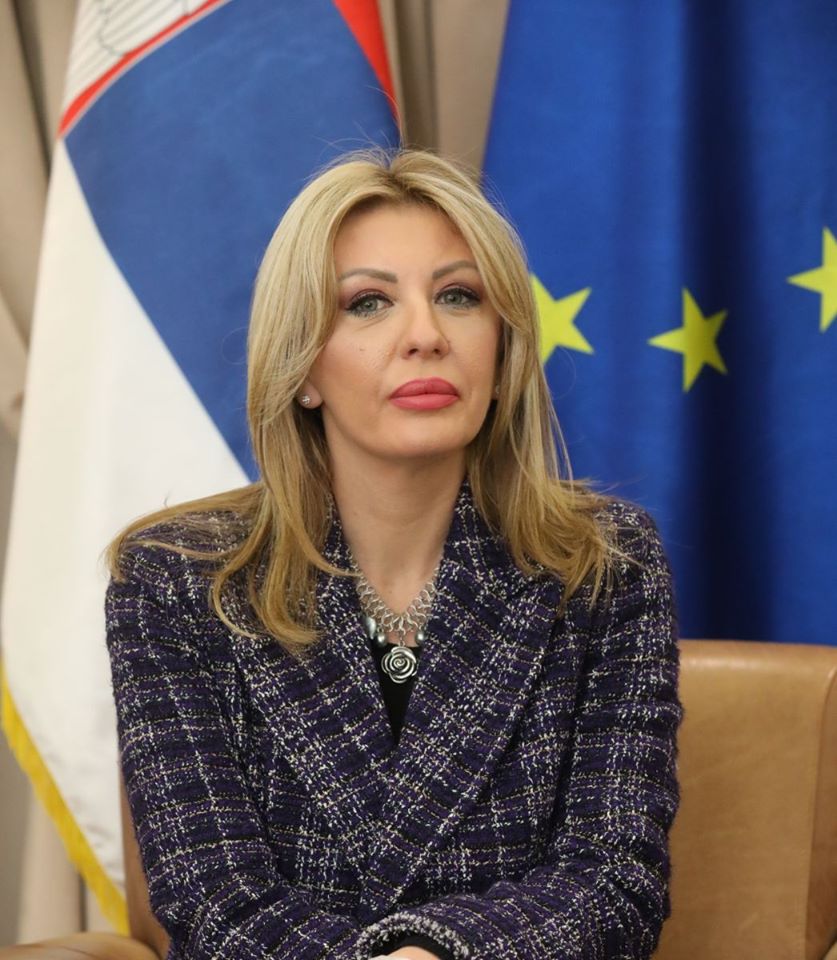
The European Union is preparing a large investment and economic package for autumn that will be intended as assistance to the economies of the Western Balkans in the fight against the coronavirus-caused crisis, while it already approved an assistance package worth EUR 3.3 billion at the EU–WB Summit in Zagreb, which was intended as assistance to healthcare systems as well as assistance in tackling the economic effects of the pandemic. In the meantime, along with the adoption of the EU budget, a seven-year IPA package worth EUR 12.6 billion was approved. These are some of the funds from which our country can use money to recover from the crisis, the only question is whether we will use all the possibilities.
Precisely how much money could Serbia receive and under which conditions?
There are several different instruments from which we have already received funds, as well as those for which we have applied and from which we expect to be able to withdraw the funds in the upcoming period. There is an entire series of envisaged financial instruments, including grants and favourable credit lines, where the largest number of these instruments is envisaged for the Western Balkan region, so exact amounts for individual countries are not specified, and, therefore, we do not know the precise amounts. Certainly, this will be a task not only for the state but also for the private and banking sector, because there are guarantee schemes for the economic recovery.
What kind of assistance has the EU provided to our country so far?
At the very beginning of the pandemic, on 16 March, I addressed a letter to Commissioner for Neighbourhood and Enlargement Olivér Várhelyi asking him to approve the reallocation of a part of the unused pre-accession grants for Serbia (IPA funds that had not been spent from the previous years) for the purpose of fighting against the coronavirus. In his reply of 24 March, the Commissioner confirmed the European Commission’s readiness to help the Republic of Serbia, stating that the use of EUR 15 million would be enabled for emergency needs and another EUR 78.4 million for short-term and mid-term needs, i.e. for overcoming the negative social and economic effects of the pandemic. We jointly identified potential grants for reallocation in the amount of EUR 93.4 million.
The emergency intervention funds enabled the immediate purchase of necessary medical equipment (ventilators, oxygen concentrators, triage containers, monitors, masks, infrared thermometers), the transport of over 740 tons of medical equipment we purchased on international market, and the engagement of around 200 medical professionals who will be delegated to healthcare centres across Serbia. In addition, these funds were also used to assist the most vulnerable categories of population through distributing food and hygienic packages.
As regards other instruments of assistance, I would like to recall that, amid the fight against this virus, we have applied for assistance through the EU Civil Protection Mechanism, from which Serbia has received additional assistance in the form of goods such as tents, field beds, blankets, sleeping bags, tent heaters etc.
Are there any concrete economic recovery programmes and under which conditions can Serbia use them? Except for grants, are there any programmes for support in the form of favourable loans intended for companies to maintain their liquidity?
We are continuously discussing with our colleagues from the European Commission the best ways to use the funds allocated for the economic recovery and support to the private sector. Commissioner Várhelyi has also announced an advanced Economic and Investment Plan for the Western Balkans that was supposed to be presented in May, but was postponed for autumn due to the pandemic; therefore, we will see how we can combine these funds, primarily from the Investment Framework for the WB and the multi-beneficiary IPA programmes, with all other instruments.
For the purpose of providing additional assistance to the Western Balkans, the European Commission has proposed amendments to multi-beneficiary IPA programmes that are intended for the entire Western Balkan region, so now the total amount of assistance is EUR 475 million. The funds have been provided by amending the existing annual programmes in a way that some projects have been reduced in their scope and budget, while others have been postponed to be financed from the following IPA 3 financial instrument. This EUR 475 million package includes the Economic Reactivation package worth EUR 455 million, as a response to the negative economic effects of the pandemic in the Western Balkans, and a EUR 20 million package intended for support to vulnerable groups and improvement of the healthcare system resilience. The package will primarily be implemented through commercial banks in the region for the purpose of increasing the liquidity of Western Balkan companies’ investment capacities through programmes already realised by the European Investment Fund, the German Development Bank, the European Bank for Reconstruction and Development and the World Bank. I would like to note that it is impossible to specify in advance the amount of funds that the Republic of Serbia would directly benefit from, because it depends on the readiness of the private and banking sector to use these possibilities.
In addition to these programmes, the European Investment Bank (EIB) is preparing a package worth EUR 1.7 billion as a response to the crisis for the entire region, which will be intended for providing liquidity to small and medium-sized enterprises in the amount of around EUR 200 million, support to the healthcare sector (EUR 500 million), support in credit lines for companies through commercial banks (EUR 400 million) and for infrastructural projects (EUR 600 million).
Author: M. Avakumović
Source: Politika





